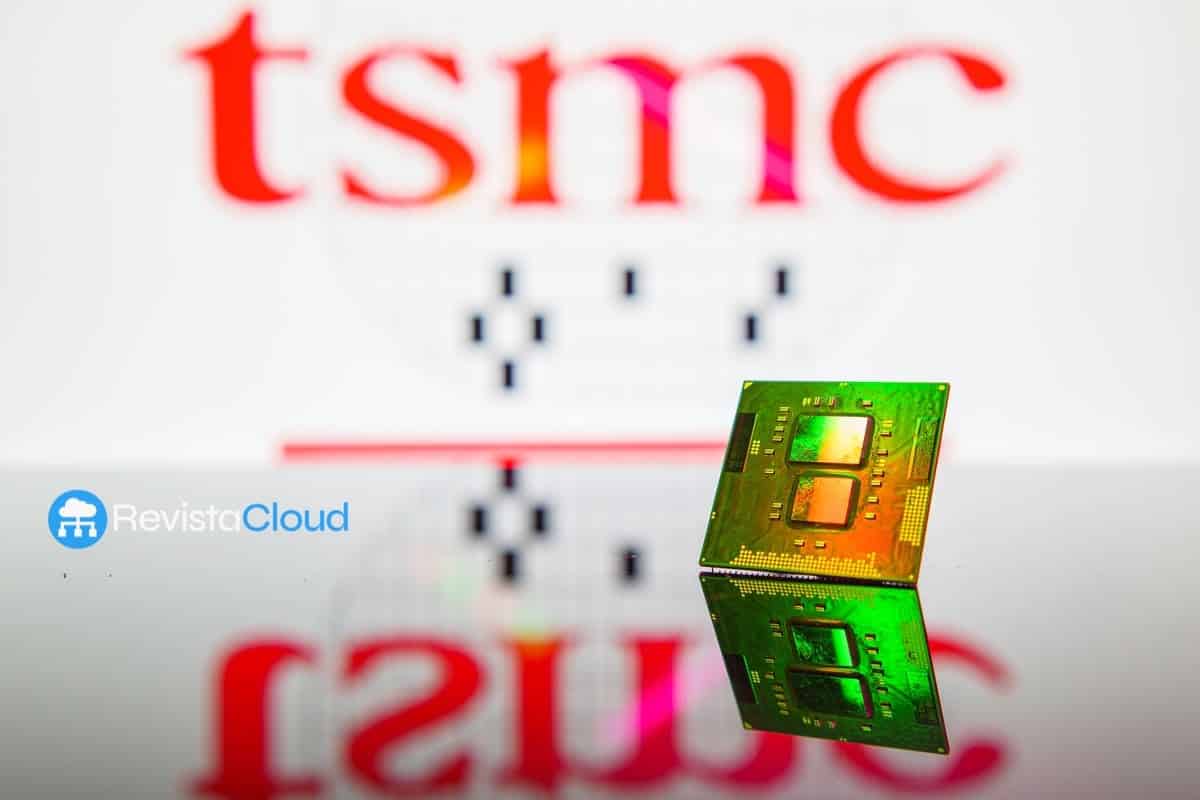The semiconductor manufacturing sector has seen a record start to the year. According to data from Counterpoint Research, global revenues in the Foundry 2.0 market—an ecosystem that goes beyond simple chip manufacturing to integrate advanced packaging, photomasks, and optimized design—grew 13% year-over-year in the first quarter of 2025, reaching $72.29 billion. The main driver: the explosive demand for AI and high-performance computing (HPC) chips.
TSMC: The Unbeatable Titan with 35% Market Share
TSMC reinforces its dominance with a 35% market share, thanks to its 3nm and 4nm process technologies, combined with advanced packaging solutions like CoWoS (Chip-on-Wafer-on-Substrate). These advances have allowed the Taiwanese company to absorb most of the demand for AI chips, clearly leading the Foundry 2.0 segment.
The report highlights that TSMC maintains its consistency in wafer shipments and is preparing to begin mass production at 2nm this year, solidifying its position as a global reference not only in extreme ultraviolet lithography (EUV) but also in photomask manufacturing, a key component for the miniaturization of complex chips.
Intel Strengthens as the Second Global Player
Intel continues its momentum with an increase of 0.6 percentage points from the previous quarter, solidifying its second position globally. Its strategy based on the 18A node, along with the Foveros packaging—which allows stacking multiple chips in 3D—has positioned it as a real alternative to TSMC in the advanced manufacturing space.
Despite its year-over-year stagnation (-0.3%), Intel has been recognized as the only credible alternative to TSMC, especially given the performance issues that Samsung Foundry continues to face with its 3nm processes using GAA (Gate-All-Around) architecture.
Advanced Packaging: Bottleneck and Opportunity
The growth of AI chips is reshaping the semiconductor supply chain. Companies specializing in packaging and testing—the segment known as OSAT (Outsourced Semiconductor Assembly and Test)—have seen a 7% year-over-year growth, with players like ASE, SPIL, and Amkor expanding capacity to respond to TSMC’s saturation.
Despite this, these companies face challenges related to scale and performance, limiting their ability to absorb all market demand. However, their role will be critical in the Foundry 2.0 ecosystem, particularly in the realm of chiplets and modular AI design.
Foundry 2.0: A Model Beyond Manufacturing
Counterpoint redefines the concept of traditional foundries. It’s no longer just about chip manufacturing (Foundry 1.0) but about providing integrated technological platforms that include packaging, design, photomasks, and even system-level co-optimization.
This transformation, driven by artificial intelligence, involves stronger vertical integration, shorter innovation cycles, and new ways to generate value in the industry.
Downturn Segments: Automotive and Industrial
Not all news is positive. Non-memory IDMs like NXP, Infineon, and Renesas experienced a 3% year-over-year decline due to weak demand in the automotive and industrial sectors. While some normalization of inventory is observed, full recovery is expected in the second half of 2025.
In contrast, the photomask segment continues to perform well thanks to the adoption of EUV technology and the increasing complexity of chip designs for AI and chiplets.
Conclusion: AI, Packaging, and Advanced Nodes Transforming the Industry
The shift toward the Foundry 2.0 model is reconfiguring the balance of power in the semiconductor industry. TSMC leads firmly, while Intel gains ground as a serious contender. The increasing importance of packaging, capacity shortages, and technical challenges point toward a greater concentration of value in fewer hands.
As summarized by William Li, a senior analyst at Counterpoint: “The adoption of AI is redefining priorities across the supply chain, consolidating TSMC and packaging players as the primary beneficiaries of this new technological wave.”
The race for AI chips has begun, and only the most prepared will be able to capitalize on the revolution that is already underway.
Source: Counterpoint Research

